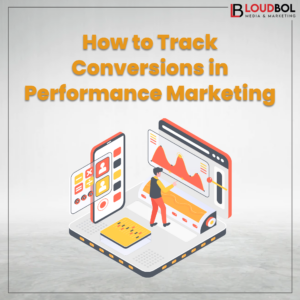In the world of marketing, first impression is everything.
You may have numerous marketing materials to present to your clients, but it’s fruitless unless you pitch them concisely.
A well-designed pitch deck can be the difference between landing your dream client and getting lost in the shuffle. It’s your chance to showcase your agency’s expertise, impress potential clients, and secure that all-important partnership.
But what makes a pitch deck truly stand out? Here, we’ll unveil the secrets to crafting a presentation that captivates your audience and drives results.

Know Your Audience:
Before diving into design, take a step back. Research your potential client. Understand their industry, target audience, and marketing goals. Tailor your deck to address their specific challenges and paint a picture of how your agency can be the solution for you. Don’t just talk about your services; please show a deep understanding of their market landscape and the unique hurdles they face.
Storytelling is Key:
Facts and figures are important but don’t forget the power of storytelling. Frame your presentation as a narrative, taking the client on a journey from their current marketing struggles to a future of success achieved through your collaboration. Weave in statistics and data to support your claims, but use them to illustrate a compelling narrative. Highlight a relatable client anecdote or case study early on to grab attention and establish an emotional connection.
Keep it Clear and Concise:
Remember, you likely only have a limited amount of time to grab attention. Strive for a clear and concise presentation. Avoid jargon and technical terms that might confuse your audience. Use strong visuals, keep text to a minimum (ideally under 10 points per slide), and focus on the most impactful information.
Slide Structure:
Here’s a suggested structure for your pitch deck, but remember to adapt it to your specific client and situation:
Title Slide: Captivate with your agency name, logo, and a powerful tagline that speaks to your value proposition.
The Problem: Address your client’s specific marketing challenges and pain points. Use data and industry insights to paint a clear picture of the current landscape.
Our Approach: Outline your agency’s unique methodology and how you tackle marketing problems differently. Briefly explain your core values and what sets you apart from the competition.
The Solution: Showcase a tailored marketing strategy designed to meet the client’s specific goals. Highlight specific tactics you’ll employ like SEO optimization, social media campaigns, or content marketing initiatives.
Quantifiable Results: Don’t just talk about success, demonstrate it. Include projections and metrics that showcase the tangible results you can achieve for the client.
Our Team: Briefly introduce your team’s expertise and experience. Focus on the key players who will be directly involved in the client’s project. Include high-quality photos and bios that highlight relevant skills and experience.

Case Studies: Demonstrate your agency’s success with past clients through compelling case studies that showcase measurable results. Choose case studies that align with the client’s industry or marketing goals for maximum impact.
Social Proof: Include testimonials from satisfied clients or industry experts to add credibility and social proof.
Call to Action: End with a clear call to action, inviting the client to take the next step. This could be scheduling a follow-up meeting, requesting a proposal, or visiting your website for more information.
Design Matters:
Don’t underestimate the power of visual appeal. Invest in a professional-looking design that reflects your agency’s brand identity. Use high-quality images, consistent fonts, and a visually appealing color palette. Consider using data visualizations like charts and graphs to present complex information clearly and engagingly.
Practice Makes Perfect:
Rehearse your presentation beforehand. Speak confidently and be prepared to answer questions.
Anticipate potential objections and have clear, concise answers ready. Show your passion and enthusiasm for the client’s brand and their marketing goals.
By following these tips, you can craft a pitch deck that stands out from the crowd. Remember, a winning pitch deck is a powerful tool that can propel your marketing agency to new heights and secure long-term client partnerships.
7 common types of business decks
Beyond marketing agencies, presentations come in various forms throughout the business world, each fulfilling a specific purpose. Here’s a breakdown of some common types of business decks:
1. Pitch Decks:
Function: Secure funding, partnerships, or buy-in for a new idea.
Target Audience: Investors, potential clients, or company stakeholders.
Content: Focuses on the “why” and “how” of a business concept. Highlights the problem, solution, market opportunity, competitive advantage, team expertise, and financial projections.
Examples: Startup Pitch Deck, Investor Pitch Deck, Sales Pitch Deck
2. Sales Decks:
Function: Convince potential customers to purchase a product or service.
Target Audience: Potential customers or decision-makers within companies.
Content: Emphasizes the product’s features and benefits, addressing customer pain points and showcasing how the product solves them. Includes pricing information, case studies, and testimonials.
3. Technical Decks:
Function: Provide detailed information about a product, service, or process.
Target Audience: Internal teams, potential partners, or clients with a technical background.
Content: Dives deeper into technical specifications, functionalities, and integrations. May include diagrams, data visualizations, and performance metrics.
4. Management Presentations:
Function: Update leadership or stakeholders on progress, performance, or strategy.
Target Audience: Company executives, board members, or investors.
Content: Focuses on key performance indicators (KPIs), project updates, plans, and potential roadblocks. It may include financial dashboards and market analysis.
5. Competitive Analysis Decks:
Function: Analyze the competitive landscape and identify opportunities.
Target Audience: Internal teams involved in product development, marketing, or sales.
Content: Compares your company’s offerings to competitors, highlighting strengths, weaknesses, and market positioning.
6. Product Roadmap Decks:
Function: Outline the vision and development plan for a product.
Target Audience: Product development teams, stakeholders, or potential investors.
Content: Showcases the product roadmap, including upcoming features, timelines, and priorities. May include user stories, wireframes, and mockups.
Remember, this is not an exhaustive list and specific deck types may vary depending on the industry and purpose. The key takeaway is to tailor your presentation to your audience and objective, ensuring clear communication and achieving the desired outcome.
The best pitch deck structure for a marketing agency will depend somewhat on the specific client and project, but there’s a core framework that consistently proves effective. Here’s a breakdown of the essential slides and their purposes:
1. Title Slide:
Function: Grab attention and establish your brand identity.
Content: Include your agency logo, name, and a powerful tagline that encapsulates your value proposition.
2. The Problem:
Function: Set the stage by highlighting the client’s specific marketing challenges.
Content: Use data, industry insights, and even relatable anecdotes to paint a clear picture of the current marketing landscape and the pain points your client is facing.
3. Our Approach:
Function: Differentiate yourself from the competition.
Content: Outline your agency’s unique methodology and core values. Briefly explain how you approach marketing problems differently and what sets you apart.
4. The Solution:
Function: Showcase your tailored plan for the client’s success.
Content: Present a customized marketing strategy designed to address the client’s specific goals. Highlight specific tactics you’ll employ, like SEO optimization, social media campaigns, content marketing initiatives, or a combination of these.
5. Quantifiable Results:
Function: Move beyond promises and demonstrate the value you bring.
Content: Include data-driven projections and metrics that showcase the tangible results you can achieve for the client. Focus on increased brand awareness, lead generation, website traffic, or other relevant metrics aligned with the client’s goals.

6. Our Team:
Function: Build trust and confidence by showcasing your expertise.
Content: Introduce the key team members who will be directly involved in the client’s project. Include high-quality photos and brief bios that highlight relevant skills and experience.
7. Case Studies:
Function: Demonstrate your agency’s success through real-world examples.
Content: Showcase compelling case studies that highlight measurable results you’ve achieved for past clients. Choose case studies that are relevant to the client’s industry or marketing goals for maximum impact.
8. Social Proof:
Function: Add credibility and build trust with external validation.
Content: Include testimonials from satisfied clients or industry experts to showcase the positive impact of your agency’s work.
9. Call to Action:
Function: Clearly define the next step for the client.
Content: End with a clear call to action, inviting the client to take the next step. This could be scheduling a follow-up meeting, requesting a proposal, or visiting your website for more information.
Additional Considerations:
Slide Count: Aim for a concise presentation, ideally between 10-15 slides.
Visual Design: Maintain a professional and visually appealing aesthetic that reflects your brand identity. Use high-quality images, consistent fonts, and a clear color palette.
Content Flow: Ensure a logical flow between slides, building a narrative that leads to a compelling call to action.
By following this structure and incorporating the elements above, you can create a pitch deck that effectively communicates your agency’s value proposition, resonates with your target client, and positions you for success in securing new partnerships.




Average Rating